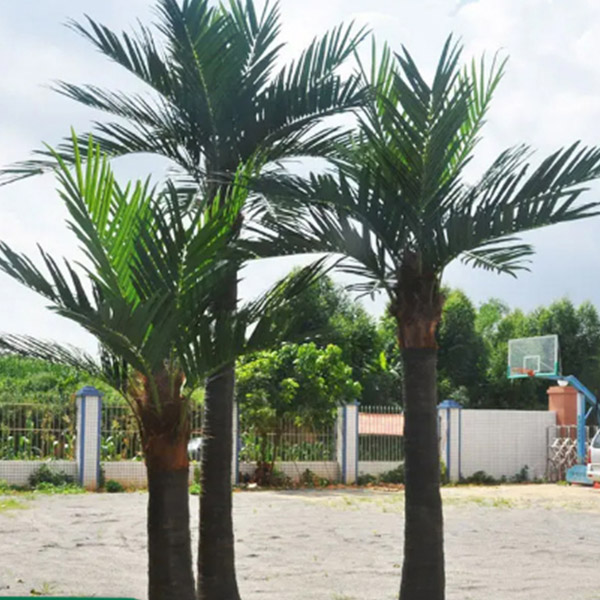
Artificial tree, as a kind of artificial tree ornament, plays an important role in landscape design. It can be used to decorate parks, courtyards, commercial blocks, hotels and other places to add green to the environment and create a romantic atmosphere. The design and layout of the simulation tree is crucial, and it needs to be carefully planned and arranged according to different places and needs. In landscape construction, there are two major design principles that need to be followed, namely the principle of authenticity and the principle of coordination.
First of all, the principle of authenticity means that the simulation tree should be realistic enough in the landscape, so that people can feel its reality at a glance. The trunk, leaves, flowers and other details of the simulated tree should be as much as possible to restore the characteristics of natural trees, so that people can feel a good feeling of being close to nature when watching. In order to improve the authenticity of the simulation tree, designers need to choose high-quality simulation tree production materials to ensure that the texture, color and shape of the real tree are similar. In addition, the shape of the simulated tree should also conform to the characteristics of the actual tree species, and there can be no obvious inconsistency with the real tree. Only real and good simulation trees can play a real decorative role in landscape construction, making the environment more beautiful and natural.
Secondly, the principle of coordination means that the simulation tree should be coordinated with the surrounding environment in the landscape, so that the whole environment is harmonious and unified. The selection, shape, and quantity of the simulated tree should complement the surrounding landscape and not create a sense of conflict or incompatibility with other elements. When designing the layout of the simulation tree, it is necessary to consider the size, shape, landscape style and other factors of the site, choose the appropriate type and size of the simulation tree, so that it can integrate with the surrounding environment to form a perfect decorative effect. In addition, the placement, density and height of the simulation tree also need to be carefully considered, as far as possible to make it echo the surrounding landscape elements, creating a harmonious and beautiful environmental atmosphere.
In general, the design principles of simulation tree in landscape construction mainly include the principle of authenticity and the principle of coordination. Only by following these two principles, designers can design a beautiful, real and harmonious simulation tree layout scheme, add green to the environment, and create a pleasant landscape environment. It is hoped that in the future landscape design, more designers can pay attention to the design and layout of simulation trees, and bring more beautiful changes to our living environment.